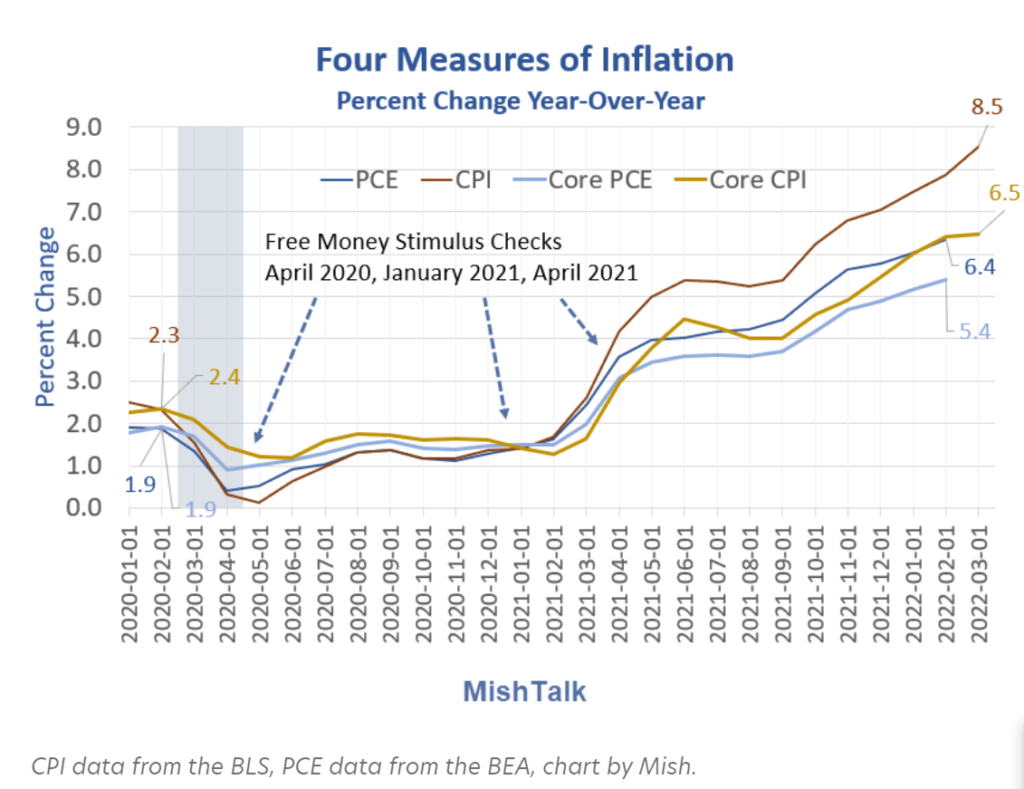Link: https://mishtalk.com/economics/how-much-free-money-stimulus-still-hasnt-been-spent
Graphic:

Excerpt:
The question is not as straight forward as it looks. The gap between spending and income isn’t constant.
Free money that goes to bottom rung households tends to immediately get spent. The higher the rung, the more the savings. This is complicated by the fact that most of the money was supposed to go to lower tiers, and further complicated by corporate fraud, especially in round one.
More importantly, personal spending does not count mortgage paydowns, stock market or Bitcoin purchases, capital expenses for businesses, drug money, other illegal uses, or money sent to relatives overseas.
….
The Peterson Foundation reports direct checks were $292 billion in round one, $164 billion in round two, and $411 billion in round three.
There was $850 billion of direct payments to taxpayers with the biggest and most unwarranted round the last.
Spending data suggests free money, at least most of direct payments, already did enter the economy.
However, that does not factor in unpaid rent via eviction moratoriums or SNAP (Supplemental Nutrition Assistance Program), formerly Food Stamps, which I will address in a separate post.
So yes, there still could be a pile of unspent stimulus savings, possibly much higher than my $2 trillion summation estimate, again with my caveats on investments, sending money overseas, etc.
Author(s): Mike Shedlock
Publication Date: 22 Apr 2022
Publication Site: Mish Talk
